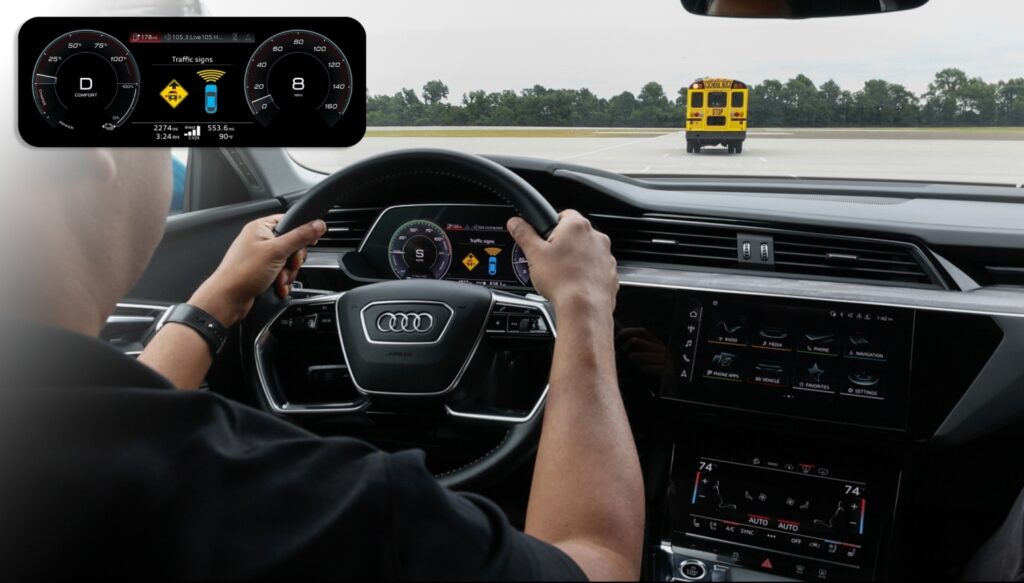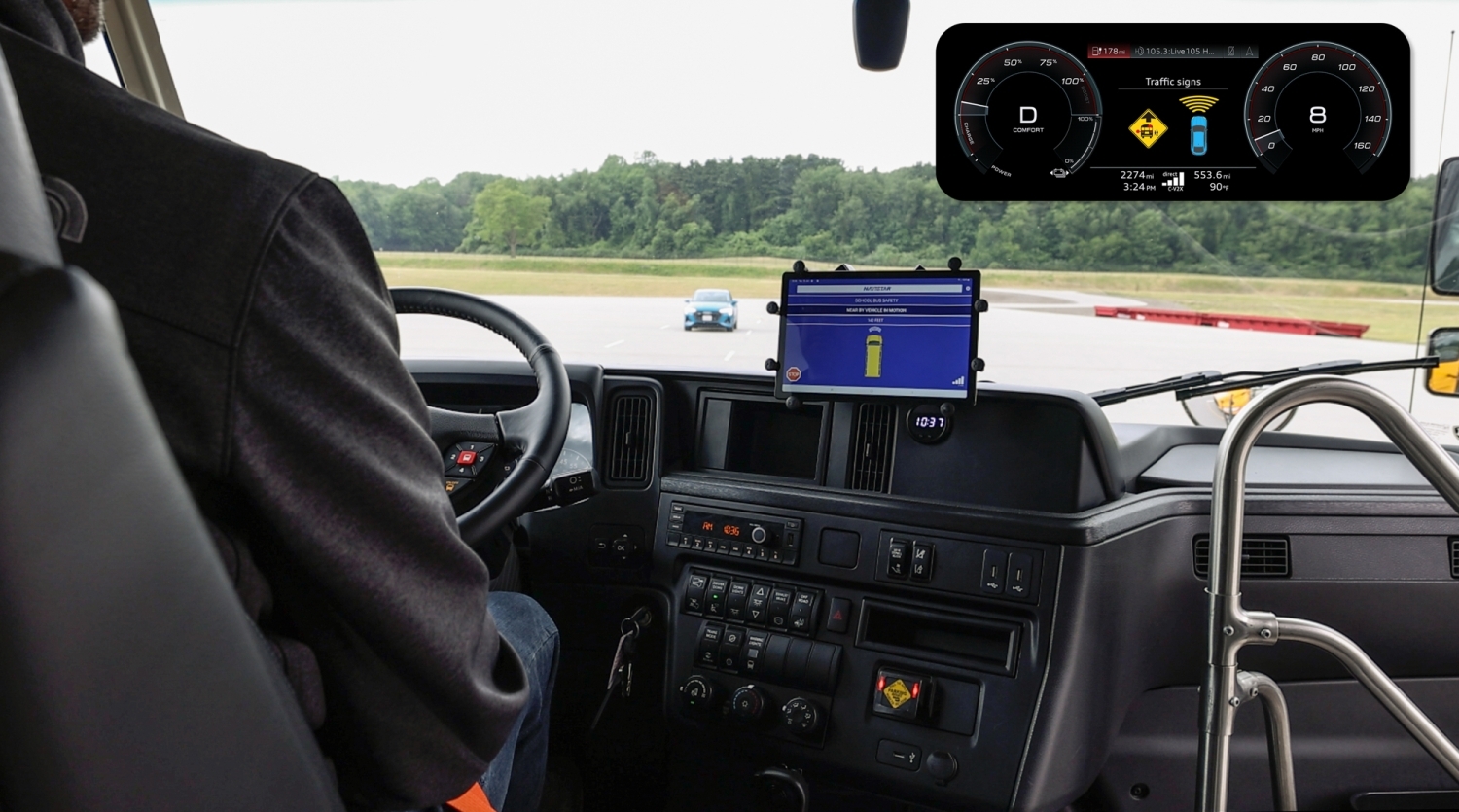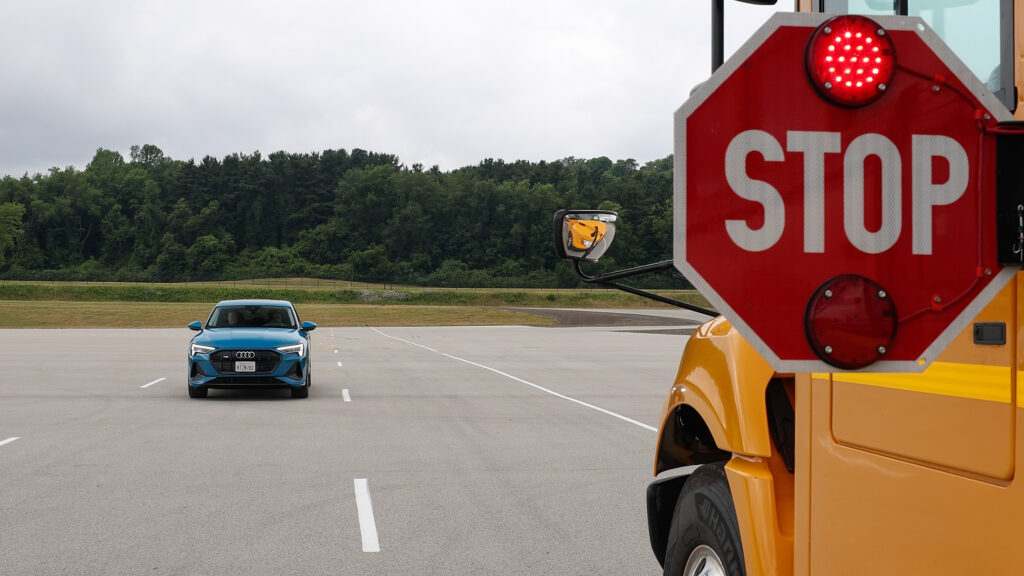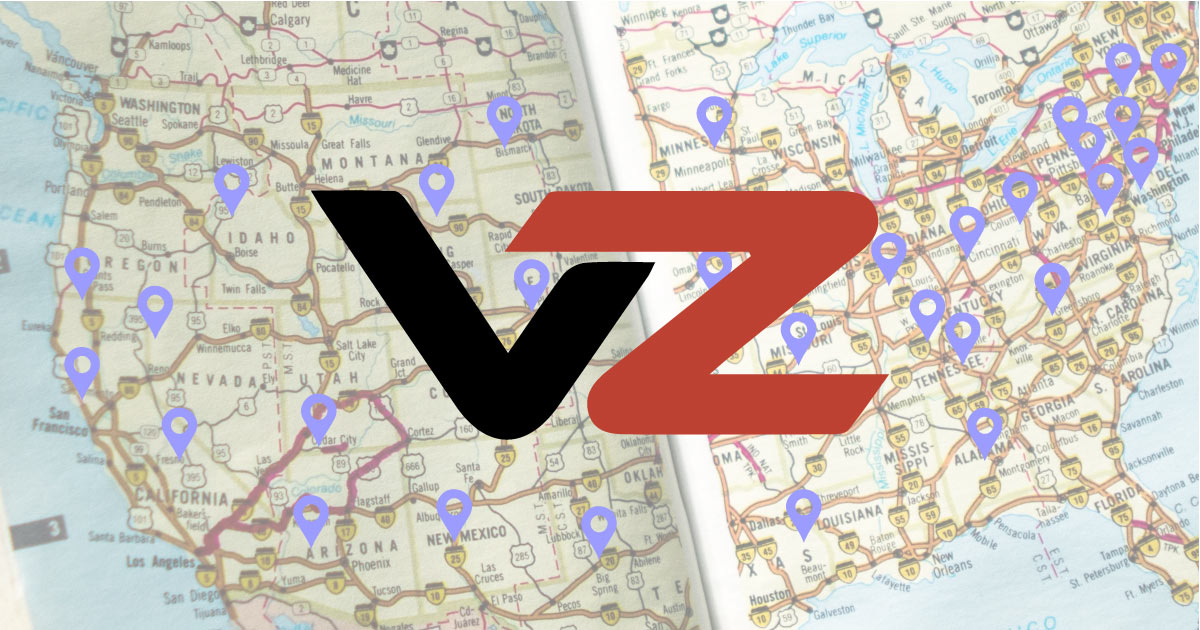We recently looked at technology developed by HAAS Alerts that gives a heads-up to drivers of Stellantis vehicles (Chrysler, Jeep, Dodge, Alfa Romeo and RAM) when emergency vehicles are approaching. The technology is now integrated into those using the popular Waze navigation app. If your vehicle’s head unit has Apple CarPlay or Android Auto and you use Waze, and if your region’s safety vehicles have the technology, you’ll see the pop-up alert. Now, another software company is looking to protect our most precious resource: children. Applied Information uses similar Cellular Vehicle-to-Everything technology to help protect kids riding a bus on their way to school and back home again.
Applied Information, Audi and Navistar
Applied Information has teamed up with Audi of America and Navistar to demonstrate the role that direct communication via C-V2X technology can play to provide potentially life-saving safety information for the 26 million children riding school buses every day in the United States. C-V2X technology offers the potential to unlock the next substantial improvements to road safety and create a safer environment for children as they travel to and from school.
Alerts on the Dash
With this technology, the driver receives an alert on the dashboard of the Audi vehicle that provides an early notification of a stopped school bus. The alert is provided even when the school bus is not visible to the driver. This is important when there are sight obstacles in the way such as corners and hills, or if the driver’s view is blocked by other large vehicles. Think about how a large garbage truck collecting trash can make a driver impatient, and the driver zips around the truck only to discover a school bus. This happens more often than you think, since kids are being taken to school and trash is being collected around the same time. Conversely, the school bus driver receives an alert of the approaching vehicle when the bus is stopped. If a vehicle is potentially approaching too quickly to stop in time, the school bus driver can take action. He can keep the door closed or alert the children to remain on the curb. The driver can lay on the horn if kids are already in the street.
The result ultimately gives drivers additional time to react. The tech is robust enough to tell when the school bus has deployed its flashing lights, stop signs and safety arms. It then removes the alert on the dash when the bus driver has retracted the safety devices. Moreover, it can even send an alert to fast drivers who are speeding in school zones – the perfect application for Audi RS drivers who may be traveling a bit too fast to begin with. The testing is being done with Audi, but aftermarket iterations will soon follow.


Keeping Latency at Bay
With C-V2X, the goal is to get information to drivers as quickly as possible so they have ample time to react. Direct communication through low-latency cellular C-V2X allows vehicles and school buses to communicate 10 times per second at a distance of up to 400 yards, virtually eliminating the latency inherent in communicating via cell tower networks. Each vehicle shares its location, speed and direction with others, thereby providing more safety for all, especially when every second counts. Audi has already demonstrated the benefits of direct communication within school and construction zones as well as for cyclists and construction workers. The same technology can be utilized for motorcyclists as well as emergency vehicles and, at some point in the relatively near future, pedestrians. Direct communications technology has the potential to help save lives and provide an incredibly valuable step toward automated driving. We are excited to implement it in the aftermarket.


